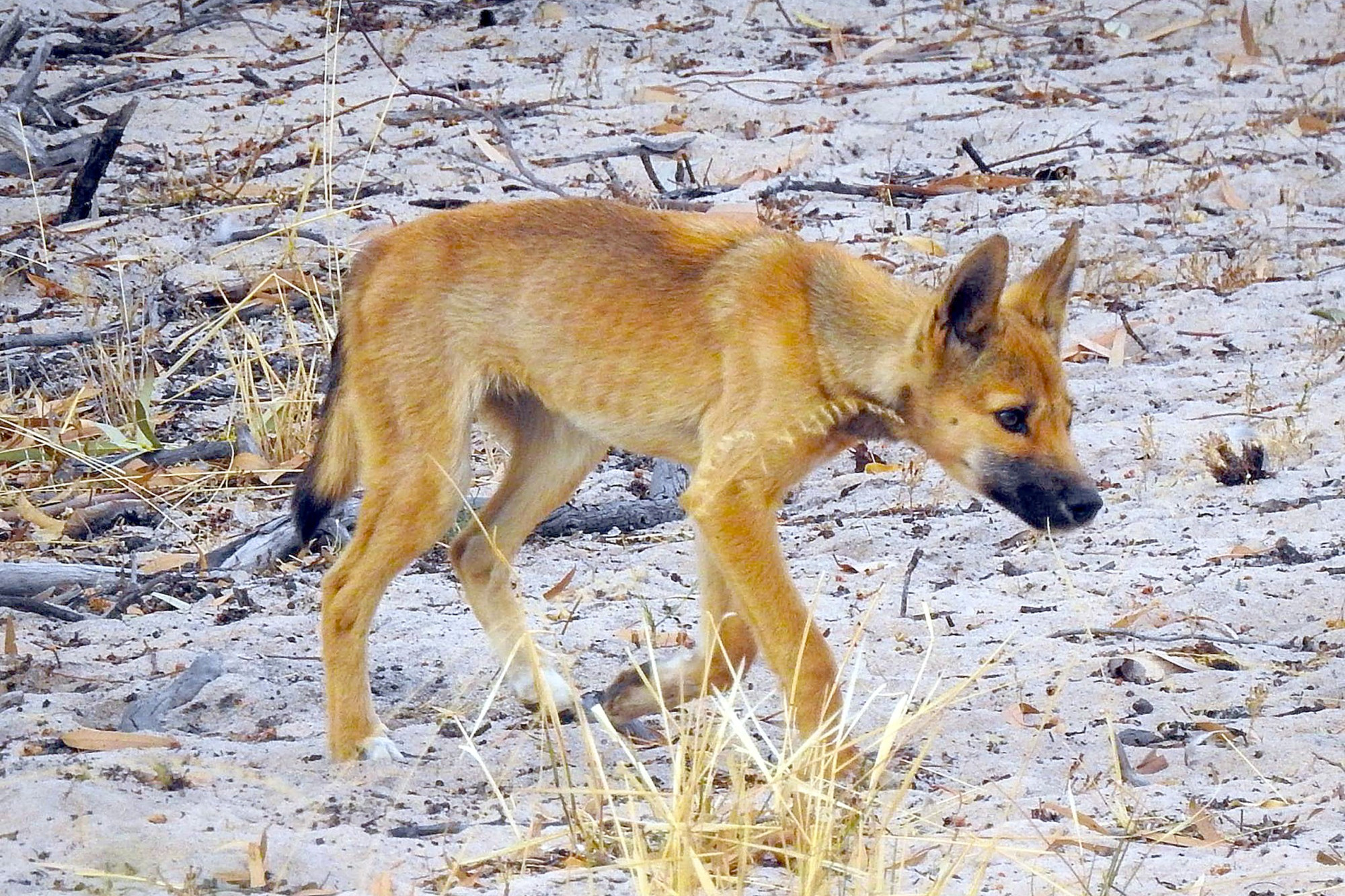General News
1 June, 2023
Big Desert Dingo discovered
A new species of pure-blooded dingo has been discovered in the Rainbow area - validating the dedication of a local woman who has spent years studying the animals. Rainbow's Ellisha Martion couldn't be more thrilled following the publication this...

A new species of pure-blooded dingo has been discovered in the Rainbow area - validating the dedication of a local woman who has spent years studying the animals.
Rainbow's Ellisha Martion couldn't be more thrilled following the publication this week of a six-year study based on her discovery.
“The release of the study means that what I’ve been fighting for and arguing for is true - that they are dingoes and not these supposed feral domestic dogs,” she said.
Ms Martion was hiking through Wyperfeld National Park in June 2018 when she came across two examples of what is now being called the Big Desert Dingo.
“Before I came back to Rainbow I was volunteering at a wildlife park in Ballarat so I had seen dingoes before and they looked exactly the same,” she said.
“They were your typical yellow-coloured dingoes, which was why I was confused because I was under the belief we only had “wild dogs” here.
“I asked Parks about them, the Department of Environment, Land, Water and Planning, and I did a lot of research.
“Since 2020, I have been determined to catch as many as I can on camera, and try to map out their territories and habits.”
Ms Martion contacted University of New South Wales’ Dr Kylie Cairns after seeing her comments on other dingo-related social media pages.
“I joined some Facebook groups and we were talking about hybrids and how high-percentage hybrids do the same ecological job as purebred dingos, because the dingo genetics are so strong, and Kylie was a part of the discussion,” she said.
“I asked her if I could send her some samples from our local 'wild dogs' to test and she was really excited because there hasn’t been an awful lot of research, let alone DNA and genetic testing in this area.”
The samples prompted Dr Kylie Cairns to include Rainbow in her travels to collect further samples and data from different areas of Australia, as she explored the genetic diversity of the species.
The results of Dr Cairns’ six-year-long study revealed that the species of dingo Ms Martion had seen on four occasions was not only 100 per cent pure-blooded, but genetically different from other dingoes in Australia.
Dr Cairns’ study has been based on a new method of DNA testing, which measures 195,000 genetic markers compared to the old method, which only used 23.
“We performed DNA testing on 307 wild dingoes and 84 captive dingoes using over 195,000 DNA markers and challenge the current knowledge about dingo-dog hybridisation in Australia,” Dr Cairns said.
“There was far less dog ancestry present in the dingo population than suggested by previous studies - a majority (85 per cent) of wild dingoes were pure or high-purity dingoes.
“Previous DNA testing of dingoes using 23 DNA markers frequently misidentified pure dingoes as hybrids or dingo backcrosses, particularly dingoes from eastern and southern Australia.
“There were no first-cross dingo-dog hybrids or feral dogs detected in our wild samples.”
The study also found evidence of four separate varieties of dingo: East, West, South, and our own Big Desert Dingo - genetically diverse from the other three varieties which have seen some cross-breeding between them over the centuries.
“The term ‘wild dog’ is misleading and inaccurate, further it leads to misunderstanding in the public discourse concerning the target of lethal control programs,” Dr Cairns said.
“We argue that the word dingo should be reinstated, for most ‘wild dogs’ in Australia are pure dingoes.”
Dr Cairns’ study will continue and she is hoping to add more samples and information on the species’ habits and diversity as time goes on.
“This work is currently entirely funded by donations, but I am still collecting dingo samples, particularly from regions not yet sampled, and adding to our knowledge of dingo identity and biogeography,” she said.
For Ms Martion, the release of this study is a great relief and she is determined to continue aiding the researchers.
“I know a lot of locals will still argue the fact that there’s feral domestic dogs out there too but, at this stage, it’s proving less likely.
“There may be the odd one or two, but they are not hybridising the dingo gene pool as much as we’ve been led to believe, and dingoes don’t tolerate feral domestic dog breeds in their territory.
Ms Martion is also hopeful that the study will encourage the government to revisit the Wild Dog Management Plan and provide protection for the local population of dingoes.
“They need to take a long, hard look at the Wild Dog Management Plan,” she said.
“There are new, different methods being trialled which can help preserve and protect native animals, while also protecting livestock, so farmers don’t have to be at odds with them.
“I’m really excited about what this will mean for future research too - the Big Desert/Wyperfeld National Park has been ignored for far too long, and we have some amazing animal species here.
“I’m going to continue helping the researchers with their work.
“I have identified and documented 10 individuals in four separate locations near here - with colours ranging from the typical yellow to sable and black - and I am now working on documenting their packs and homing range as well as collecting more samples for testing.”
Ms Martion said she welcomes anyone who is interested to contact her, and farmers willing to contribute samples to the study are greatly appreciated.
Dr Cairns’ research paper “Genome-wide variant analyses reveal new patterns of admixture and population structure in Australian dingoes" can be found online at onlinelibrary.wiley.com/doi/10.1111/mec.16998